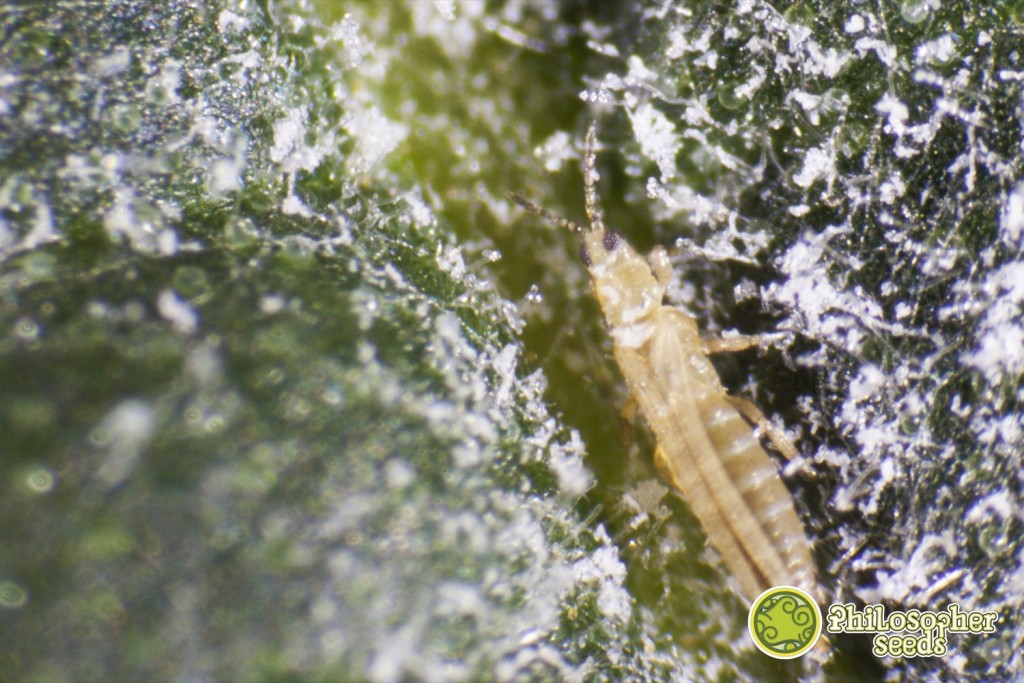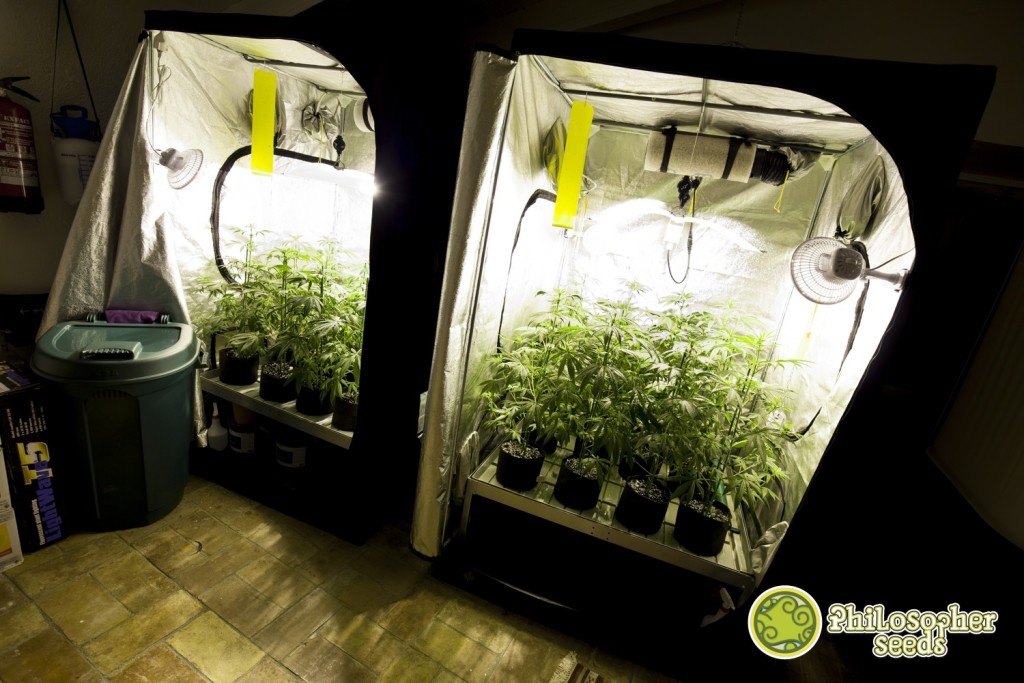How to treat thrips on cannabis plants
While thrips (insects of the Thysanoptera order) are not usually a serious thread for our crops, thay can be a pain in the neck if not identified and treated on time, especially when propagation conditions are optimal. These small flying insects are usually found in indoor grow rooms and greenhouses, where the warm temperatures greatly promote their propagation. They attack a vast number of plants like cereals, fruits, vegetables, etc.
Next we'll tell you what are thrips, how they reproduce and what should we do to avoid an infestation of these tiny insects on our marijuana plants. At the end of this post, you'll also see a spectacular video of a thrip eating spores of powdery mildew on a cannabis leaf.

What are thrips?
As we already mentioned, thrips are a group of small insects (1-2mm in length) formed by several species which attack a large number of plants and cultivars. They are actually the smallest flying insects found around the world. The most common species found on cannabis plants is Frankliniella Occidentalis, which can be found almost anywhere and is also primary vector of a large number of plant viruses. If environmental conditions are optimal, they can produce up to 11-12 generations per year..

Thrips have two pairs of wings and are normally whitish/yellowish (adults are a little darker). They are found on the underside of the leaves, where they pierce the plant tissues to suck sap and lay their eggs. Their sucking action is easily visible at naked eye, since they leave silver-yeallow stains on the surface of the leaves (a little bit larger than those left by spider mites). Oftenly, these stains are the first visible symptoms of a thrip infestation on our plants. In the event that the population of thrips reaches a considerable number, we'll also observe tiny black dots on the leaves, which are their droppings.
In severe cases, the leaves may also be deformed, suffering necrosis and dying in few days.
It is important to remember that, as happens with other insects, thrips can act as viral vectors, that is to say, then can carry viruses and diseases and infect the host plants. It is believed that thrips can act as vectors of more than 20 different viruses.
Prevention and management of thrips on cannabis plants
Despite it is not the worst pest for marijuana, thrips must be carefully identified and treated through a number of prevention and management measures, especially if we live in an area where these insects are commonly found.

Thrips normally enjoy warm climates with constant temperatures (24-28ºC) and relatively low humidity levels. If these conditions are found - and there is not any prevention system - their presence will be obvious on the entire crop in a few time.
Using yellow sticky traps greatly helps to control the population of adults (and also to detect their presence), since they'll stick to these traps letting us know they're threatening our plants. Also, our grow room should be clean and free from insects and dead plant matter and we should disinfect all growing tools and equipment (scissors, pots, etc.) between harvest and sowing. Removing other plants and/or weeds (especially outdoors) is also useful, since they could be used by thrips to propagate and infect our plants later on.

In the event that - depite our prevention measures - we find thrips in our grow room we can use any organic insecticide (they work great gainst thrips) every 2-3 days and until we see no signs of activity on our plants. Potassium soap and pyrethrins (chrysantemum extract) are excellent options. They're even more effective when used together. If these products are not enough, we can use chemical insecticides like Confidor (Bayer), although we'll only use this type of products as a last resort due their impact on the environment (and the grower himself).
Another option, much safer than chemical products, are biological control agents: we can find several natural predators of thrips oftenly used by farmers to prevent/eradicate an infestation of thrips. Ambliselius cucumeris and Ambliselius degenerans are normally very effective, as well as the Orius laeviatae bedbug. Remember that this type of pest control is much more effective in indoor grow rooms and greenhouses than outside.
We can also find thrip nets (as we can find mosquito nets) which are put on the air intake/outtake and thus prevent thrips from entering our grow room. This type of nets are mainly used by indoor/greenhouse farmers.
Finally, and as happens often with pests and diseases, some cannabis varieties are more resistant to thrips than others, so using the most resistant individuals will ensure healthy crops free from insects.
We hope this post was useful and helped you to better manage thrip infestations on your plants. Please leave here any doubt or comment, we'll be pleased to reply it as soon as we can.
Happy harvests!







